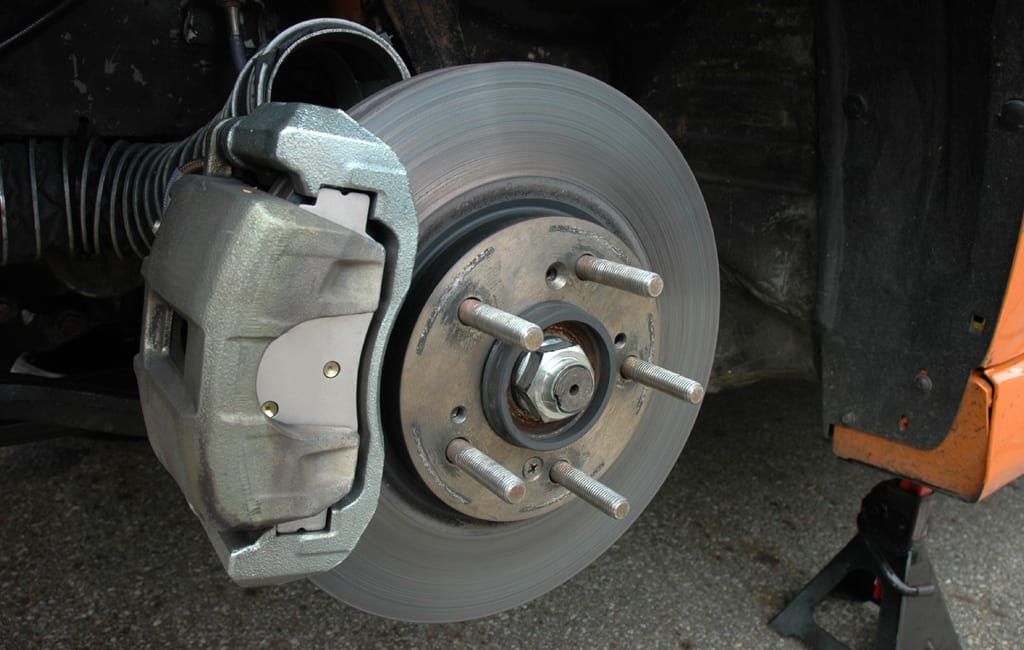Just as your gas mileage will vary depending on where and how you drive, so it goes with the life of brake pads (or brake shoes), the friction material that gets pressed against a metal disc (rotor) or drum to stop your vehicle. How long will they last? That depends on a lot of factors.
If you drive only 8,000 miles a year but it’s mainly in a crowded urban area such as Detroit, Chicago, Boston or Washington, D.C., you will need to replace brake pads or shoes more often than someone who drives 28,000 miles a year across the flatlands of Nebraska. You use your brakes a lot more in urban driving than on a rural highway.
Unfortunately, there is no clear-cut schedule that tells you when it’s time to replace the brakes, so you need to rely on your ears and the advice of an experienced automotive technician. Most vehicles should have their tires rotated at least every six months, and that is a good time to have the brakes inspected, as well. A mechanic can check the thickness of the pads and the condition of the calipers or drum hardware to spot wear.
Many cars have built-in wear sensors that scrape against a brake disc when the pads needed replacing. The driver will hear an annoying screeching sound when they apply the brakes (or when the brakes are released on some vehicles). Some cars incorporate electronic wear indicators that alert the driver with a dashboard warning if the pads reach minimum thickness, but this feature typically comes on expensive luxury cars and it’s better to rely on regular brake maintenance inspections than to assume the car has your back.
Those sensors aren’t on every vehicle or necessarily at every wheel, so drivers should listen for squeaking, squealing, metal-on-metal grinding (often a sign that brake pads are entirely gone) and other noises that indicate wear. Some minor noises can be eliminated by cleaning the brakes, but persistent, prominent noises usually mean parts are worn.
If the brake pedal pulsates under light or moderate braking, it could reflect wear or a warped disc. (Pedal vibration under panic braking is normal if your car has an antilock braking system, which has been required on new cars in the U.S. since the 2012 model year.) If the steering wheel tugs or the car pulls to one side or the other during braking, you may have one worn or otherwise compromised front pad.
Other signs when driving are longer stopping distances, or when you apply the brakes your foot goes down farther, closer to the floor. Because brake linings wear gradually, you may not notice the demise in performance, so that’s where the experienced eye of a mechanic can help.
Most cars have a brake warning light that comes on for a few seconds every time you start your car. If it comes on while driving, that probably means your brake system is low on fluid because of a leak or a problem with the brake master cylinder. Note that this may or may not be the same warning light associated with the parking brake, and it’s not the same light that comes on if you lose ABS functionality.
All new cars and light trucks also have front disc brakes. Most have rear discs, as well, though some lower-priced cars still come with rear drum brakes. With disc brakes, it has been common practice to replace just the brake pads and resurface the rotors on a lathe if needed so the surface is even and smooth.
In recent years, however, more automakers have switched to rotors that are lighter and thinner to reduce weight and save money. Discs used to last through two or three resurfacings, but don’t be surprised if when it’s time for new pads you’re told you also need new rotors. The current ones may not have enough material to be shaved off in resurfacing and may not be as durable as those from, say, 10 or more years ago. In addition, repair shops are reluctant to resurface rotors because it adds time to a job. Additionally, the quality of the work can vary by who does it and how good they are. Instead, it is faster, easier and more profitable for repair shops to just install new rotors along with new pads.


